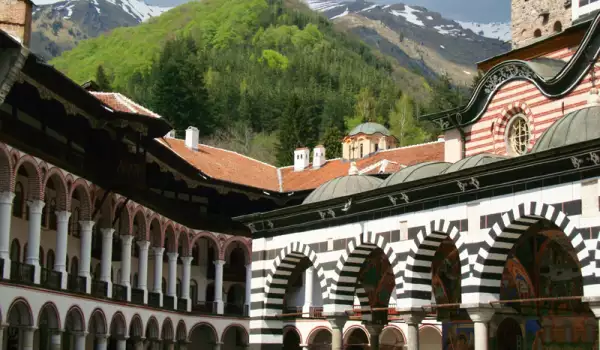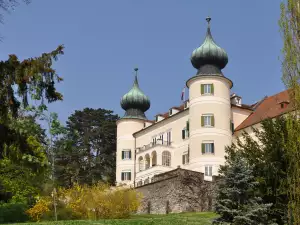Rila Monastery

Founded in the early 10th century by St. Ivan Rilski, the monastery for nearly 11 centuries has been the undisputed symbol of the Bulgarian national spirit. The monastery is situated in the picturesque foothills of the highest mountain in Bulgaria - Rila Mountain, which rises in the southwest end of the country.
Rila Monastery is located 117 km from Sofia and is situated at 1141 m altitude in an inaccessible part of Rila. It is the second largest in the Balkans. On both sides of the monastery pass two rivers - Drushlyaitsa and Rila rivers.

The history of Rila Monastery began in the 30 s of the 10th century, when it was erected at the site of the old hermitage in the Rila Mountains. Rila Monastery was founded by Ivan Rilski and his disciples in the tenth century, the monastery initially was near a cave which the hermit inhabits.
In the fourteenth century, Rila Monastery moved to its present location, where fortification activities took place. The oldest tower of the monastery is that of Sebastocrator Hrelyu. Hrelyo Dragovol formed in the Rila monastery buildings for residential purposes, a defense tower and a nave church.
Together with the stable structure, the monastery is remarkable for its interior architecture and decoration, the harmonic forms of facades and colonnades.
The new building of the monastery is built over a period of 30 years, but even with the many artists involved in the degeneration of the monastery architectural integrity is achieved. The walls of the buildings are painted and stand up against the stone wall surrounding the monastery. Verandas overlooking the courtyard complement the architectural ensemble. Of particular interest is the monastery kitchen, called the cook-house. It is a tower, passing through four floors and ending with a dome above the roof.

In medieval times, the Rila Monastery is richly endowed by rulers, surviving fires and attacks. Many villages make donations to the monastery, in consequence of which guest rooms are shaped with paintings and carvings, typical for the Koprishtitsa, Kyustendil areas and others. Numerous service buildings were added. Several other churches, holy places and chapels belong to the complex.
In 1778, the monastery suffered a huge fire. Restoration began in 1784 by Master Alex, who in 1816-1819 designed and built the east, north and west wings. A new fire in Rila Monastery in 1833 destroyed large parts of the monastery, but they recovered it again, with an effort led by Alex.

You enter the Rila Monastery through two gates - the Samokov and Doupnitsa. In 1837, in the courtyard was built the church "Holy Mother". It has three naves, five domes, no anteroom, with two side chapels and an open gallery. The church keeps the relics of Ivan Rilski.
Rila Monastery keeps many works of art and literature, so it is a center of spiritual and material culture. The development of Bulgarian art over the years can be traced through a rich collection of icons, the oldest of which the icon “St. Ivan Rilski”, dating from the fourteenth century. Here is the Rafailov Cross, for whose creation were needed a whole 12 years. It is made in the 18th century.
In 1983, Rila Monastery was added to the List of World Heritage Sites.
Today anyone who wants to feel the atmosphere of the Rila Monastery can do throughout the year from 8:00 to 18:00. The monastery is one of the 100 tourist sites of Bulgarian Tourism and the seal is located in the museum of the monastery.
The site is part of a movement founded in 1966 100 National Tourist Sites of Bulgaria.















